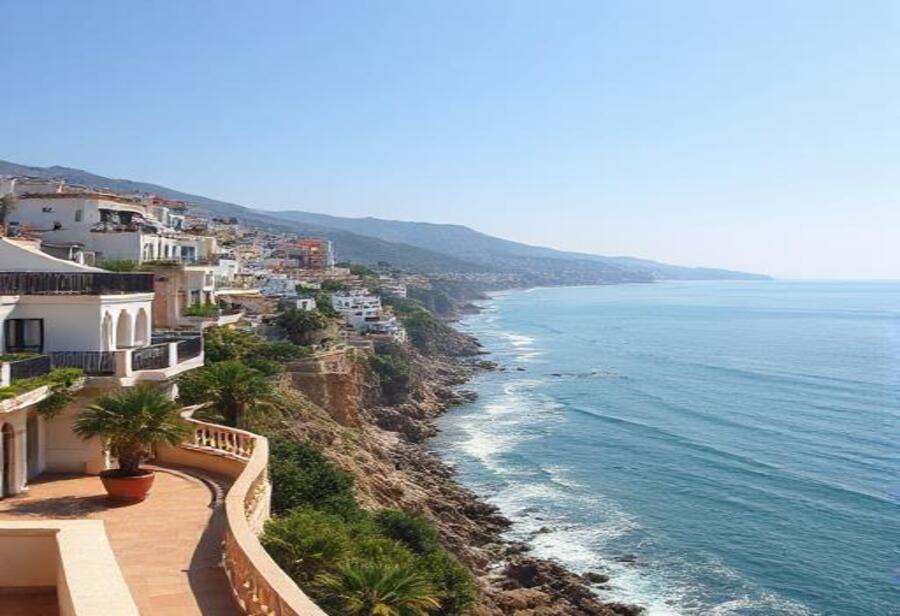≡-Spain Issues Urgent Coastal Safety Advisory as Portuguese Man O’ War Stings Disrupt Summer Holidays for British Tourists – Viral of Today
<> Viral of Today <>
Home » Portugal Travel News » Spain Issues Urgent Coastal Safety Advisory as Portuguese Man O’ War Stings Disrupt Summer Holidays for British Tourists Friday, July 25, 2025Spain has issued an urgent coastal safety advisory as an increase in Portuguese man o’ war sightings along its popular beaches has led to a series of painful stings for British tourists. These venomous marine creatures, often mistaken for jellyfish, have been reported in large numbers across coastal hotspots like Costa del Sol and San Juan, resulting in several swimmers requiring medical attention. Experts attribute the surge to rising sea temperatures and shifting ocean currents, which have brought the creatures closer to shore just as the summer tourist season reaches its peak. Local authorities are now on high alert, urging beachgoers to exercise caution as the threat continues to disrupt vacations for those visiting Spain this summer.The hot beaches of Spain have always had a special place in the hearts of Brits looking for sun, sand, and turquoise waters during the summer months. But this season, a hidden marine peril is quietly overshadowing the paradise-like scene. There has been a surge in painful stings from Portuguese man o’ war, leading to safety warnings at some of the country’s most popular coastal destinations. As record numbers of beachgoers head into ocean waters, this little-understood marine menace is making an unwelcome addition to the summer experience.A Surge in Sightings and StingsRecent beach incidents have drawn attention to the growing presence of Portuguese man o’ war along Spanish coastlines. Several swimmers at beaches such as Costa del Sol, San Juan, and Salinas have required medical intervention after painful encounters with the species. Although beach closures have not been enacted, the rise in marine activity has prompted advisories and heightened surveillance by local coastal teams.These stings, while rarely life-threatening, can cause severe discomfort and pose health risks, particularly for children or individuals with allergies. With the travel season at its peak, concerns are mounting about how widespread the problem might become.What’s Behind the Sudden Increase?A combination of environmental and seasonal factors is believed to be drawing these creatures closer to the Spanish coastline. Warmer-than-usual water temperatures and shifts in ocean currents have made nearshore waters more favourable for the species, which typically resides in tropical and subtropical zones. In addition, the dramatic surge in human activity in the sea during summer months increases the likelihood of close encounters.The unusual presence of these creatures in clusters suggests drifting patterns influenced by wind, currents, and the natural ebb and flow of marine ecosystems. This seasonal intrusion, though temporary, underscores the unpredictable nature of coastal waters in a changing climate.Not a Jellyfish—A More Complex ThreatDespite their jellyfish-like appearance, the Portuguese man o’ war is a siphonophore—a colony of individual organisms that operate together. Its distinctive float sits at the surface, often in vibrant shades of blue, pink, or violet, resembling an inflated balloon. Beneath that surface, however, lie its most dangerous features—venomous tentacles that can extend up to 30 metres.The tentacles are armed with microscopic harpoons that inject venom upon contact. Designed to immobilise small sea creatures, this venom causes humans to suffer intense burning, red welts, and in some cases, allergic reactions or respiratory complications. Even after lying on the shore for several days, these marine creatures remain capable of inflicting painful stings upon contact.Immediate Response Is CriticalBeing stung by a Portuguese man o’ war can be a traumatic experience, especially for those unfamiliar with how to respond. Fortunately, the effects can be managed with prompt and appropriate care. The recommended response includes:Alerting the nearest beach safety officer or lifeguard immediatelyIn Spain, dialling 112 from any mobile phone connects you directly to emergency services for immediate assistance.Rinsing the sting site with seawater—never freshwater, as it may activate additional venom cellsCarefully removing visible tentacles with tweezers or a firm-edged cardImmersing the affected area in warm water (not scalding) for at least 30 minutes to alleviate painTaking anti-inflammatory medication or pain relievers, if availableMost cases resolve with proper first aid, though victims experiencing difficulty breathing or intense reactions should be transferred to medical facilities without delay.Avoiding Common MistakesMisconceptions and outdated remedies continue to circulate when it comes to treating stings from marine creatures. Popular remedies—like using ice, applying vinegar, or even urinating on the wound—are strongly discouraged by health authorities. Using these methods may worsen the injury or trigger dormant venom cells to release toxins again. Rubbing the sting site should also be avoided, as it can spread the venom further into the skin.Proper care, not outdated myths, ensures the safest outcome.Advice for Travellers and TouristsWith millions expected to visit Spain’s coast this summer, awareness plays a crucial role in prevention. Visitors are encouraged to:Always review posted beach advisories and safety flags before heading into the sea to stay informed about potential marine hazards.Avoid touching unfamiliar objects, even those that appear lifeless or harmlessWear water shoes or sandals while walking near the shorelineKeep children close and educate them about marine safetyCarry basic first-aid supplies when visiting remote or less-monitored beachesThose with pre-existing conditions or allergies should also consider discussing risk with a healthcare provider before travelling.Are Beaches Still Safe?The presence of marine threats like the Portuguese man o’ war doesn’t necessarily mean beaches are unsafe—but it does call for vigilance. Spain’s coastal authorities have systems in place to monitor marine conditions, and public flag warnings are typically reliable indicators of water safety. In most cases, these creatures drift away with changing tides, and their presence is temporary.The key is understanding that nature operates without warning. Awareness, preparation, and respect for the sea can ensure that trips remain memorable for all the right reasons.Spain has issued an urgent coastal safety advisory as an increase in Portuguese man o’ war sightings along popular beaches has caused painful stings for British tourists. Rising sea temperatures and shifting currents are believed to be bringing these venomous creatures closer to shore, disrupting summer vacations.ConclusionThe beautiful beaches of Spain continue to attract thousands of holidaymakers looking for culture, cuisine and some lovely coastlines. But below its placid surface, the ocean is a source of unpredictable grinds. And the increase in Portuguese man o’ war sightings is a powerful reminder that the ocean is a living ecosystem, not merely a holiday backdrop. And with a few precautions and educated decisions, visitors can get out on the beaches of Spain’s coastline without being vulnerable to invisible marine threats.
This information will surprise you!
See also
- Read until the end to discover everything.
- Important information you need to know.
- Interesting facts and helpful tips.
Conclusion
Did you enjoy the news? Keep following us daily!













